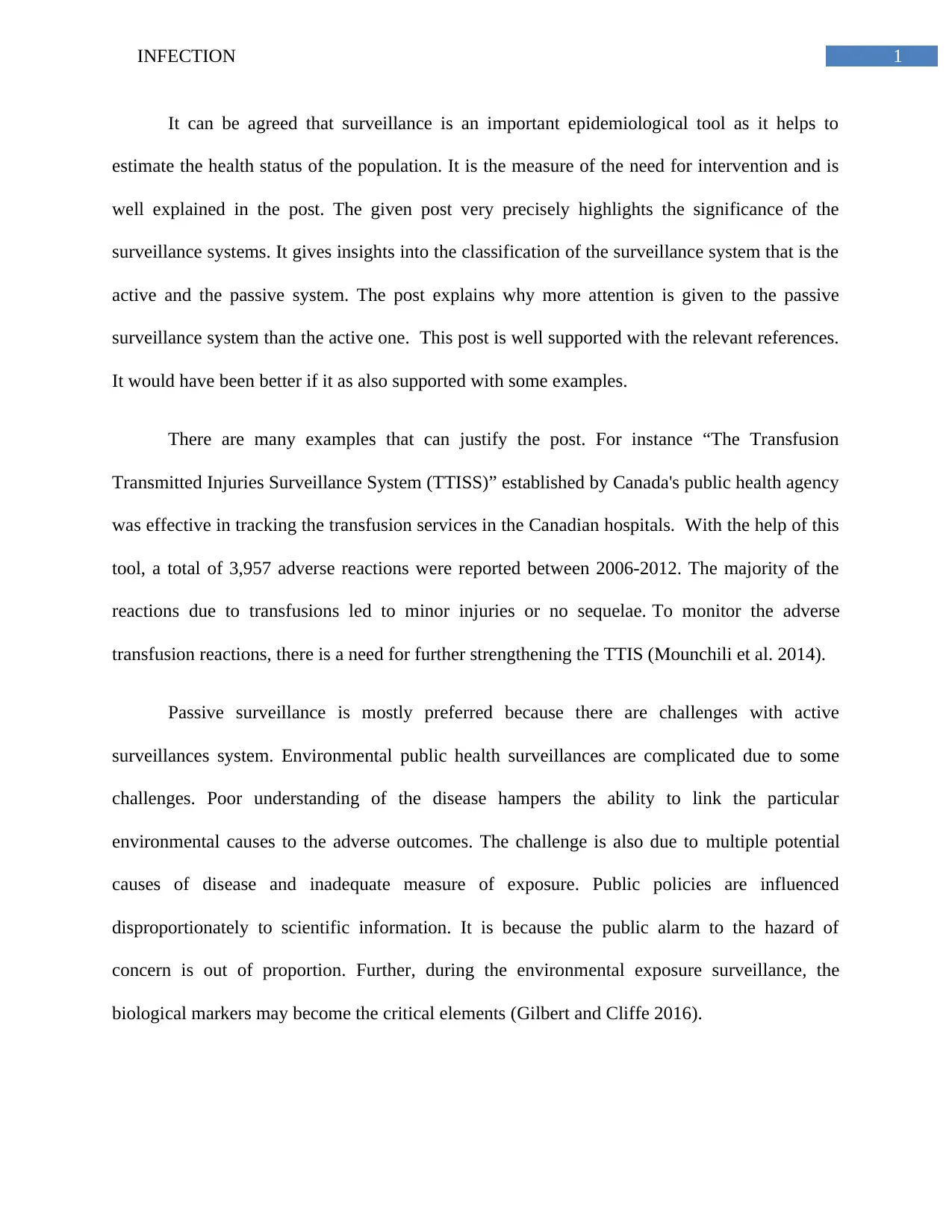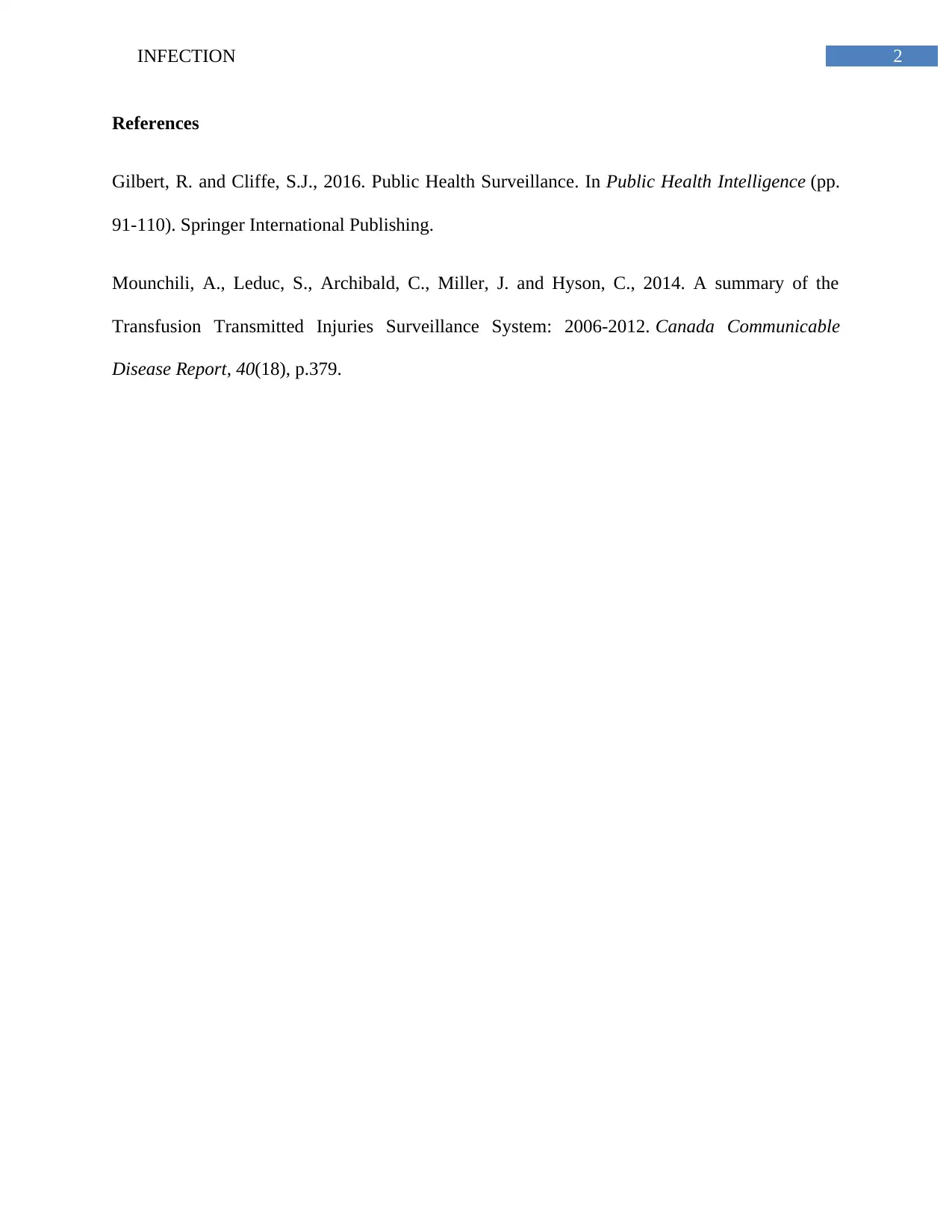Exploring the Role of Surveillance in Infection Control
VerifiedAdded on 2020/04/13
|3
|415
|60
Homework Assignment
AI Summary
The assignment explores the role of surveillance as a crucial epidemiological tool to gauge population health needs and interventions. It delves into different surveillance systems: active and passive, emphasizing why passive systems receive more attention. The analysis is supported with examples like Canada's Transfusion Transmitted Injuries Surveillance System (TTISS), which reported 3,957 adverse reactions from 2006-2012. Challenges in environmental public health surveillance are highlighted, such as poor disease understanding, multiple potential causes, and disproportionate public alarm. Further strengthening of passive systems like TTIS is recommended for better monitoring.
1 out of 3










![[object Object]](/_next/static/media/star-bottom.7253800d.svg)